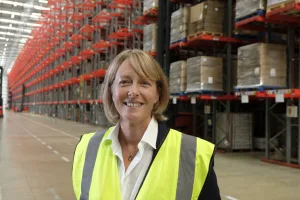Energy flashpoint looms in warehouse
Energy has rarely been a major concern in the warehouse. That might’ve been different, for a number of reasons. First, it could have been an environmental priority. In 2006, The Stern Review on the Economics of Climate Change suggested the corporate world was finally getting behind the drive towards a more environmentally friendly and sustainable way of doing business. But a few years later the recession hit and the momentum faltered.
Nowadays, ‘green issues’ are perceived as the priority of young people. For businesses, the focus is more on cost and while firms often unveil ‘eco bling’ projects, it does not always filter down to on-the-ground reality. In the last decade, if you wanted to make an environmental gain, you had to make sure it saved money too. This has served some technologies such as LED lighting very well. But while some energy bills have been coming down, others have been on the rise, to the extent that continuity of supply could be emerging as a real issue.
Recently, at the Warehouse Technology Group Live event in Manchester (full write-up next month), Kevin Mofid, director of research, Savills highlighted this. He spoke about a 2 million sq ft fully-automated warehouse that was planned, which would use ‘almost as much energy in a year as Lincolnshire’. He asked the audience: is anyone coming up with innovative energy solutions? A large scale distribution centre needs 3-13Mva, which is roughly equivalent to that needed for 10,000 three bedroom homes.
Mofid said: “If you add in electric vans and cars, energy supply will get out of hand. We advise you to think about it now, consider how to secure power supply, or think of off-grid solutions. There are also many National Grid substations with low power supply, that will require upgrade to facilitate major warehouses. If you are thinking of locating a new warehouse in England and look at a venn diagram of energy, labour and land availability, there are few places where they meet optimally.”
There are certainly instances of companies trying new things to save energy. In this issue we have a case study featuring a cold chain firm that has made the most of its electricity by carefully responding to demand and feeding energy back to the grid for profit when it can.






